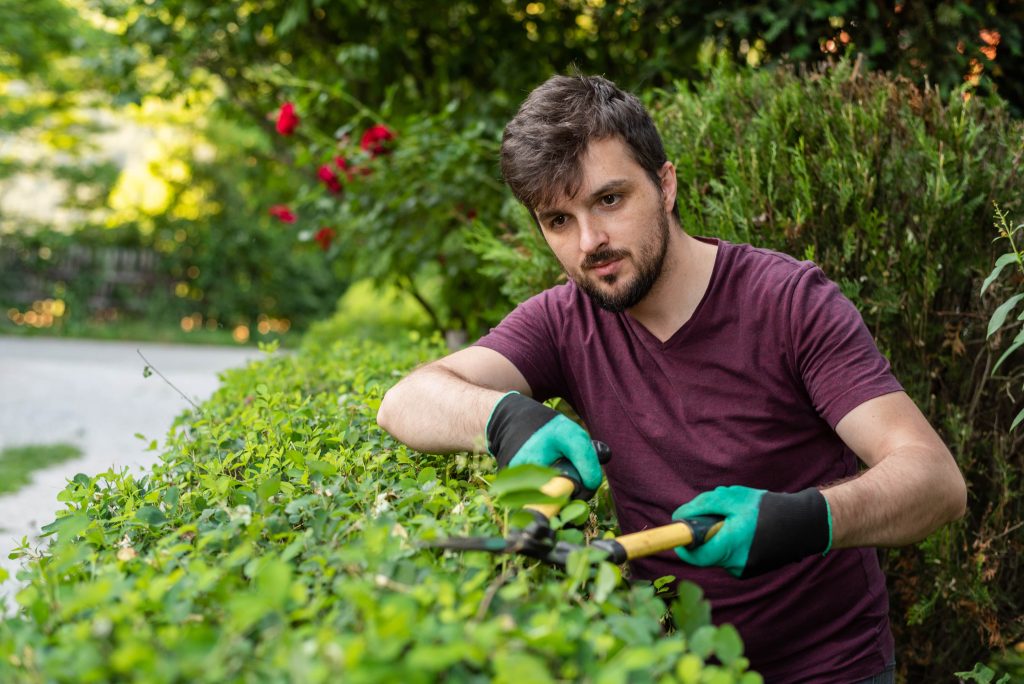In Cyprus, designing an eco-friendly outdoor area is not only a conscientious decision, but also a wise financial move that improves aesthetics while conserving time and water. Understanding landscaping design in Cyprus that is suited to our Mediterranean environment can help you construct durable, eye-catching gardens with minimal maintenance, whether you’re a homeowner in Paphos, Limassol, or Larnaca. What sustainable techniques, however, are actually successful here?
What Is Xeriscaping and How Does It Work in Cyprus?
Xeriscaping is a water-efficient landscaping technique that incorporates intelligent design, effective irrigation, and drought-tolerant plants. It’s a game-changer in our sun-drenched region, when summer temperatures frequently soar and rainfall is scarce.
Key elements of xeriscaping include:
Native and drought-resistant plants—such as olive trees, lavender, rosemary, and carob—that thrive on minimal water once established.
Mulching—using organic mulch like pine bark or olive husks to prevent evaporation, suppress weeds, and boost soil health.
Efficient irrigation systems—like drip or micro-spray emitters—to deliver water directly to roots with little waste.
Hydrozoning—grouping plants with similar water needs to avoid overwatering.
Through the provision of natural habitats, these techniques improve biodiversity, drastically cut water usage, and ease your maintenance load.
Why Should I Use Native or Mediterranean Plants?
Selecting plants that are suited to Cyprus’s climate and soil is one of the main tenets of sustainable landscape design. Native plants are hardy by nature, pest-resistant, and need little extra fertilizer or water.
Plants to consider include:
Capparis spinosa (caper) – hardy shrub, resilient to heat and poor soils.
Pistacia lentiscus (maquis) – evergreen with attractive berries and dense foliage.
Thymus capitatus (wild thyme) – groundcover that thrives in full sun.
Rosmarinus officinalis (rosemary) – aromatic, drought-tolerant, and great for pollinators.
Olea europaea (olive) – iconic, timeless, low-maintenance tree.
A balanced, self-sustaining garden ecosystem that flourishes all year long is produced by layering these sorts, from trees to groundcover.

Can Hardscaping Be Eco-Friendly?
Yes, and it even improves the sustainability of your garden. Pergolas, patios, walls, and other non-living features are referred to as hardscaping.
Choose locally sourced stone or reclaimed materials to reduce carbon footprint.
Use permeable paving to boost water absorption.
Oriented pergolas and shade structures can reduce outdoor temperatures and cut energy costs by cooling adjacent indoor spaces.
Dry stone walls—a traditional Mediterranean technique—don’t require mortar, allowing wildlife passage, and yield natural drainage.
How Can I Conserve Water Effectively?
Concern over water scarcity is spreading throughout the Mediterranean. Using water-saving techniques in your landscaping may have a significant financial and environmental impact.
Rainwater harvesting systems—using barrels or underground cisterns—capture seasonal rains for later use. Even small setups can sustainably water potted plants or vegetable patches.
Smart irrigation timers and moisture sensors help you water only when the soil needs it, reducing run-off and over-watering. Pairing these with drip irrigation optimises every drop.
Permeable paving—made of gravel, stone, or porous tiles—allows water to infiltrate the soil rather than creating surface runoff, recharging groundwater naturally.
What Soil & Fertiliser Practices Support Sustainability?
Any sustainable garden starts with healthy soil. Although Mediterranean soils are often rocky, alkaline, and low in nutrients, good soil management techniques may increase output while lowering input costs.
Composting yard waste and kitchen scraps nourishes soil naturally, encouraging worms and beneficial microbes.
Green manures (like legumes) fix nitrogen, enriching soil without chemicals.
Soil testing lets you identify deficiencies and apply the right amendments, avoiding wasteful or harmful fertiliser use.
Cover cropping between planting seasons protects soil from erosion, retains moisture, and supports soil microbes.
How Important Is Biodiversity in My Sustainable Landscape?
An eco-friendly landscape is an ecosystem that is dynamic and ever-changing. A healthier, more resilient garden is guaranteed when biodiversity is supported.
Include:
A mix of flowering plants (salvias, lantanas, marigolds) to attract pollinators like bees and butterflies.
Fruit trees or bushes (figs, pomegranates, grapes) to provide habitat and food for wildlife—and tasty produce for you.
A small pond or water feature to support amphibians and beneficial insects. A shallow design encourages dragonflies and frogs without excessive maintenance.
Deadwood piles or rock heaps, which provide shelter for insects, lizards, and hedgehogs.

How Should I Maintain a Sustainable Garden Without High Effort?
A low-maintenance garden doesn’t mean neglect—it means smart, intentional care:
Prune at the right season: In Mediterranean climates, late winter or early spring pruning encourages healthy regrowth.
Mulch annually: Replenishing mulch conserves moisture and suppresses weeds.
Regular weeding reduces resource competition and improves aesthetics.
Inspect for pests naturally first, then use organic controls like neem oil or insecticidal soap if needed.
With these steps and a thoughtfully planned sustainable layout, maintenance becomes a purposeful activity, not a chore.
How Can I Combine Sustainability with Beauty?
Beautiful sustainable gardens are possible. Employ color and texture repetition (e.g., rosemary plants in patterns, lavender along walks) or contrast stones with vegetation. Sunlight is reflected by light terracotta, gentle blues, and whites, giving your garden a Mediterranean feel.
The environment remains dynamic by including seasonal elements such as spring blossoms, summer scent, and fall fruits. Additionally, low-voltage or solar-powered LEDs for unobtrusive outdoor illumination draw attention to architectural features and prolong evening enjoyment while using less energy.
Ready to Embrace Sustainable Landscape Design in Cyprus?
It doesn’t have to be difficult to turn your outdoor area into an environmentally aware haven. Every decision you make, from perfecting xeriscaping and native planting to putting water-smart systems in place and establishing wildlife-friendly zones, adds up to a more attractive and greener future.
We at Green Planet Landscaping Cyprus like working with homeowners to realize their sustainable garden ideas. For a customized garden consultation, get in touch with us right now. Together, let’s cultivate a more environmentally friendly future.
